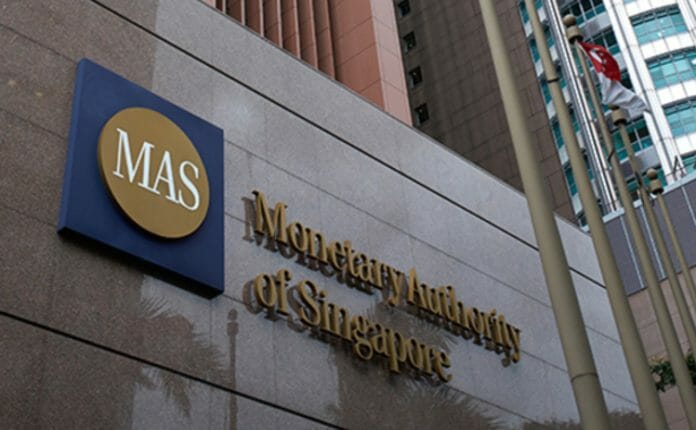The Monetary Authority of Singapore (MAS) left its monetary policy unchanged on Friday (Apr 14), hitting the pause button on a series of tightening moves it began since October 2021 to combat rising inflation.
In its half-yearly monetary policy statement, the central bank described its current policy stance as being “appropriate for securing medium-term price stability”, while flagging the risk of a “deeper than anticipated” slowdown in the Singapore economy amid higher risks to global growth.
It will therefore “maintain the prevailing rate of appreciation” of its Singapore dollar nominal effective exchange rate (S$NEER) policy band, it said.
The width and the mid-point of the band were also left unchanged.
Only six out of 17 analysts polled by Reuters anticipated the move to stand pat. Most analysts had expected the central bank to tighten its policy yet again to tame persistent elevated inflation.
The central bank tightened monetary policy five times previously, most recently in October when it did a re-centering of the mid-point of its policy band.
Unlike most central banks which target interest rates, the MAS manages monetary policy by letting the local dollar rise or fall against the currencies of its main trading partners within an undisclosed band, known as the S$NEER.
It adjusts its policy by changing the slope, mid-point and width of the policy band.
MAS said its five successive monetary policy tightening moves since October 2021 have “tempered the momentum of price increases”, with the effects of these past moves “still working through the economy and should dampen inflation further”.
“With imported inflation turning more negative and core inflation expected to ease materially by end-2023, MAS has assessed that the current appreciating path of the S$NEER policy band is sufficiently tight and appropriate for securing medium-term price stability,” the central bank’s policy statement said.
“This policy stance will continue to reduce imported inflation and help curb domestic cost pressures.”
The central bank left its inflation forecasts unchanged on Friday. Headline inflation for 2023 is still expected to come in at between 5.5 percent and 6.5 percent, while core inflation, which excludes accommodation and private transport, will be between 3.5 percent to 4.5 percent in 2023.
The monetary policy decision comes alongside official advance estimates that showed the Singapore economy slowing down in the first quarter of 2023.
The economy grew by 0.1 percent year on year, missing market estimates and coming in much slower than the 2.1 percent growth recorded in the previous quarter. On a quarter-on-quarter seasonally-adjusted basis, gross domestic product shrunk by 0.7 percent, a reversal from the 0.1 percent expansion in the earlier three months.
The MAS noted that Singapore’s economic growth is projected to be “below trend” this year, with the slowdown possibly being “deeper than anticipated” due to intensifying risks to the global economy.
In its statement, it pointed to the sharp downturn in the global electronics industry, and the drag on global investment and manufacturing from tighter financial conditions that will intensify in the quarters ahead









